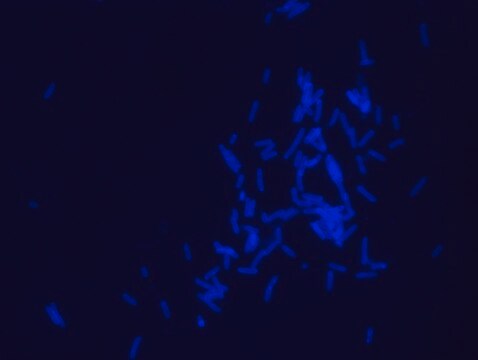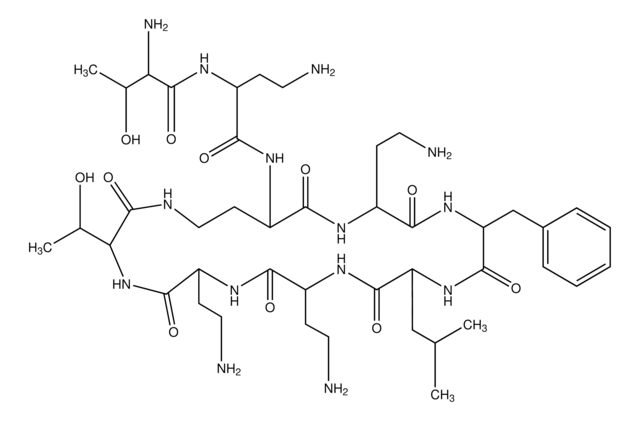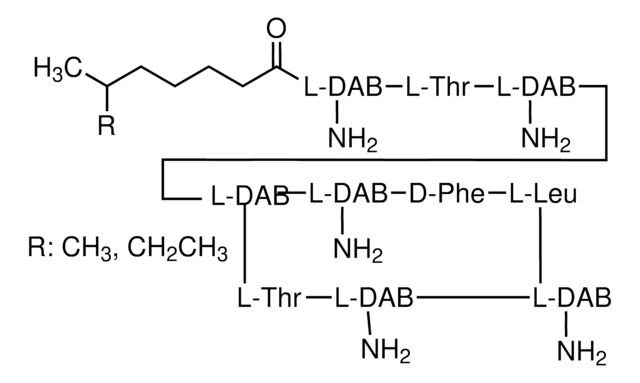G1424
Globomycin from Streptomyces hagronensis
Sinónimos:
Globomycin, Glycine, N-(N-(N-(N-(N-(3-hydroxy-2-methyl-1-oxononyl)-N-methylleucyl)-L-alloisoleucyl)-L-seryl)-L-allothreonyl)-, rho-lactone, SF 1902
About This Item
Productos recomendados
biological source
Streptomyces hagronensis
Quality Level
assay
≥98% (HPLC)
form
powder
color
white
solubility
DMSO: 1 mg/mL
antibiotic activity spectrum
Gram-negative bacteria
mode of action
enzyme | inhibits
storage temp.
−20°C
−20°C
SMILES string
N1(C(C(=O)NC(C(=O)NC(C(=O)NC(C(=O)NCC(=O)OC(C(C1=O)C)CCCCCC)C(O)C)CO)C(CC)C)CC(C)C)C
InChI
1S/C32H57N5O9/c1-9-11-12-13-14-24-20(6)32(45)37(8)23(15-18(3)4)29(42)35-26(19(5)10-2)31(44)34-22(17-38)28(41)36-27(21(7)39)30(43)33-16-25(40)46-24/h18-24,26-27,38-39H,9-17H2,1-8H3,(H,33,43)(H,34,44)(H,35,42)(H,36,41)
InChI key
VFGBXFZXJAWPOE-UHFFFAOYSA-N
General description
Application
- Globomycin, a new peptide antibiotic with spheroplast-forming activity. I. Taxonomy of producing organisms and fermentation.: This study explores the taxonomy of the producing organisms of Globomycin and details the fermentation processes involved. This antibiotic shows spheroplast-forming activity, indicating its potential application in targeting bacterial cell wall synthesis (Inukai et al., 1978).
Biochem/physiol Actions
Storage Class
11 - Combustible Solids
wgk_germany
WGK 3
flash_point_f
Not applicable
flash_point_c
Not applicable
Elija entre una de las versiones más recientes:
¿Ya tiene este producto?
Encuentre la documentación para los productos que ha comprado recientemente en la Biblioteca de documentos.
Nuestro equipo de científicos tiene experiencia en todas las áreas de investigación: Ciencias de la vida, Ciencia de los materiales, Síntesis química, Cromatografía, Analítica y muchas otras.
Póngase en contacto con el Servicio técnico







